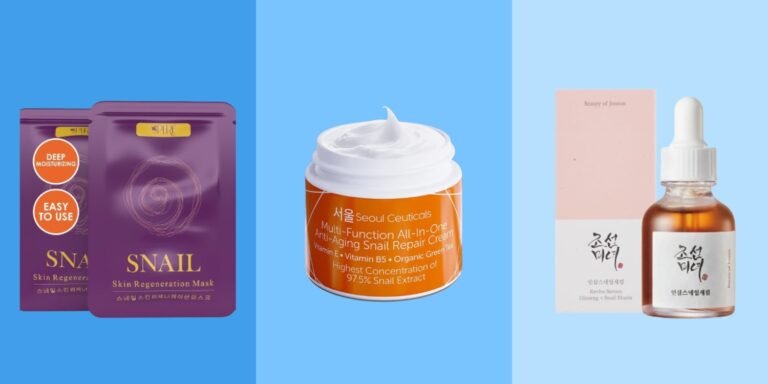How to get rid of cystic pimple

Introduction
Cystic pimples are one of the most severe and challenging types of acne. They appear as painful bumps beneath your skin, deep-rooted and difficult to reach. These stubborn blemishes can leave both physical and emotional scars, affecting your self-confidence and daily life.
The Reality of Cystic Acne:
- Deep, painful inflammation under the skin
- Potential for long-term scarring
- Risk of dark spots and hyperpigmentation
- Significant impact on self-esteem
It’s important to act quickly when dealing with cystic pimples. If left untreated, these deep-seated inflammations can get worse, causing more pain, spreading infection, and permanent scarring. The right treatment approach can help reduce these risks and speed up healing time.
In this comprehensive guide, you’ll discover:
- The science behind cystic pimple formation
- Effective medical treatments and professional solutions
- Practical home remedies and self-care strategies
- Prevention techniques for future breakouts
- Signs that indicate when to seek professional help
Whether you’re dealing with occasional cystic breakouts or persistent acne, this guide provides the knowledge and tools you need to tackle these troublesome blemishes head-on. You’ll learn proven strategies to not just treat existing cysts, but prevent future ones from forming.
Understanding Cystic Pimples
Cystic pimples stand apart from regular acne as the most severe form of breakouts. These painful, fluid-filled lumps develop deep under the skin’s surface, creating raised, red bumps that can span several centimeters in diameter. Unlike common pimples that come to a head within days, cystic acne can persist for weeks or months, often leaving behind stubborn scars and dark spots.
Key Characteristics of Cystic Pimples:
- Large, painful bumps deeper than regular pimples
- Soft, fluid-filled sacs beneath the skin
- Red or purplish coloration
- Tender to touch
- Size ranging from 5mm to several centimeters
- Resistant to typical over-the-counter treatments
Identifying Symptoms
The distinctive symptoms of cystic acne help differentiate it from other skin conditions:
- Physical Appearance:Raised, swollen areas under the skin
- No visible head or opening
- Clusters of interconnected bumps
- Redness and inflammation around affected areas
- Sensory Symptoms:Throbbing pain
- Tenderness when touched
- Heat in the affected area
- Pressure sensation beneath the skin
Causes of Cystic Pimples
The development of cystic acne involves multiple factors working together to create deep skin inflammation.
1. Excess Oil Production
- Overactive sebaceous glands produce excess sebum
- Oil combines with dead skin cells, creating a plug in the pore
- Bacteria thrive in this environment, leading to infection
- The immune system responds with inflammation
2. Dead Skin Cell Accumulation
- Slow cell turnover traps dead cells within pores
- Combination with oil creates an ideal environment for bacteria
- Clogged pores become breeding grounds for inflammation
3. Hormonal Influences
- Androgens increase during puberty
- Menstrual cycle fluctuations trigger breakouts
- Pregnancy-related hormonal changes
- Polycystic ovary syndrome (PCOS)
- Birth control
Treatment Options for Cystic Pimples
Treating cystic pimples requires a strategic approach combining different methods for optimal results. You’ll find various treatment options available, each targeting specific aspects of cystic acne formation.
Topical Treatments
1. Benzoyl Peroxide
- Concentrations ranging from 2.5% to 10%
- Kills acne-causing bacteria beneath the skin
- Reduces inflammation and redness
- Works best when applied once daily to clean, dry skin
- Start with lower concentrations to minimize irritation
2. Salicylic Acid
- Available in strengths from 0.5% to 2%
- Unclogs pores by dissolving dead skin cells
- Reduces swelling and redness
- Can be used in combination with benzoyl peroxide
- Ideal for preventing future breakouts
3. Retinoids
- Prescription-strength options like tretinoin
- Over-the-counter alternatives like adapalene
- Speeds up cell turnover rate
- Prevents dead skin cells from clogging pores
- Reduces post-inflammatory hyperpigmentation
Application Tips for Maximum Effectiveness
- Cleanse your face with a gentle, non-comedogenic cleanser
- Pat skin dry with a clean towel
- Wait 5-10 minutes before applying treatments
- Use a pea-sized amount for your entire face
- Apply in thin layers to avoid irritation
Recommended Treatment Schedule
Morning Routine
- Gentle cleanser
- Benzoyl peroxide or salicylic acid treatment
- Non-comedogenic moisturizer
- Broad-spectrum sunscreen
Evening Routine
- Gentle cleanser
- Retinoid treatment
- Hydrating moisturizer
Combining Treatments Safely
- Space out applications of different active ingredients
- Start with one product and gradually introduce others
- Watch for signs of irritation or dryness
- Adjust frequency based on your skin’s response
- Consider alternating treatments on different days
Treatment Duration
- Allow 4-6 weeks for visible improvement
- Continue treatment even after
Professional Treatments
Dermatologists offer specialized treatments for severe cystic acne cases that don’t respond to standard topical solutions. A popular and effective option is corticosteroid injections, delivered directly into inflamed cysts to provide rapid relief.
These injections work by:
- Reducing inflammation within 24-48 hours
- Shrinking the size of painful cysts
- Minimizing the risk of scarring
- Providing immediate pain relief
Chemical Peels
Professional-grade chemical peels help remove dead skin cells and unclog pores. These treatments use stronger concentrations of acids than over-the-counter products, targeting deeper layers of skin to:
- Reduce active breakouts
- Prevent new cyst formation
- Improve skin texture
- Fade post-acne marks
Light Therapy
Blue and red light therapy sessions offer a non-invasive treatment option:
- Blue light targets acne-causing bacteria
- Red light reduces inflammation
- Combined therapy enhances healing
- Regular sessions prevent future breakouts
Extraction Procedures
For particularly stubborn cysts, dermatologists may perform professional extraction:
- Sterile tools minimize infection risk
- Proper technique prevents scarring
- Immediate drainage provides relief
- Post-procedure care instructions ensure proper healing
Microdermabrasion
This treatment removes surface skin cells and stimulates collagen production:
- Reduces appearance of acne scars
- Improves skin texture
- Unclogs pores effectively
- Promotes skin renewal
Professional treatments require consistent follow-up care and maintenance. Your dermatologist will create a customized treatment plan based on your skin’s specific needs and response to various interventions.
Professional Treatments
Professional dermatological treatments offer powerful solutions for stubborn cystic acne cases. Corticosteroid injections stand out as a highly effective medical intervention for severe cystic breakouts.
Corticosteroid Injections
- A dermatologist injects a diluted corticosteroid directly into the cyst
- Results typically appear within 24-48 hours
- Reduces inflammation and shrinks the cyst size rapidly
- Provides immediate pain relief
- Minimizes the risk of scarring
Chemical Peels
- Professional-grade chemical solutions remove dead skin cells
- Unclogs pores and reduces inflammation
- Helps prevent future cystic breakouts
- Available in different strengths based on skin sensitivity
Light and Laser Therapy
- Blue light therapy targets acne-causing bacteria
- Red light therapy reduces inflammation
- Photodynamic therapy combines light treatment with special medications
- Multiple sessions may be required for optimal results
Extraction Procedures
- Professional drainage of large, painful cysts
- Performed under sterile conditions to prevent infection
- Immediate relief from pressure and discomfort
- Recommended only for mature cysts
Microdermabrasion
- Removes dead skin cells and unclogs pores
- Improves skin texture and tone
- Reduces the appearance of acne scars
- Regular treatments help prevent new breakouts
Professional treatments work best when combined with a consistent skincare routine. Your dermatologist might recommend specific post-treatment care instructions to maximize results and prevent future breakouts. These treatments often require multiple sessions for optimal results, and costs vary depending on the chosen procedure and your location.
Home Remedies and Self-Care Practices
Effective home remedies can significantly reduce cystic pimple discomfort and promote healing. A warm compress application stands as a primary treatment method – place a clean, warm washcloth on the affected area for 10-15 minutes, 3-4 times daily. This practice helps bring the cyst closer to the surface while reducing pain and inflammation.
Essential Skincare Routine Components
- Use lukewarm water for cleansing
- Apply gentle, alcohol-free cleansers
- Pat dry with a clean towel
- Avoid harsh scrubbing or exfoliation
- Select non-comedogenic moisturizers
Natural Remedies for Spot Treatment
- Tea tree oil (diluted) – antibacterial properties
- Green tea bags – anti-inflammatory effects
- Honey masks – natural healing properties
- Aloe vera gel – soothes irritation
- Ice packs – reduces swelling
Lifestyle Adjustments
Dietary Modifications
- Reduce high-glycemic foods
- Limit dairy consumption
- Increase water intake
- Add zinc-rich foods
- Incorporate omega-3 fatty acids
Foods to Include:
- Leafy greens
- Berries
- Nuts
- Fish
- Whole grains
Foods to Avoid:
- Processed sugar
- White bread
- Fried foods
- Full-fat dairy
- Chocolate
Stress Management Techniques
- Regular exercise (30 minutes daily)
- Meditation practices
- Deep breathing exercises
- Adequate sleep (7-9 hours)
- Yoga sessions
Additional Self-Care Practices
- Change pillowcases twice weekly
- Keep hair clean and away from face
- Avoid touching face throughout day
- Clean phone screens regularly
- Remove makeup before bed
Spot Treatment Protocol
- Cleanse area gently
- Apply warm compress
- Use spot treatment product
- Add moisturizer
- Protect with sunscreen
Regular implementation of these practices creates a foundation for managing cystic acne effectively. A consistent routine helps prevent future breakouts while supporting the healing of existing ones.
For more severe cases, it may be beneficial to explore mild cystic acne treatments or consult with a healthcare professional for personalized advice and treatment options, such as those outlined in this comprehensive guide on home remedies for acne.
Prevention Strategies
A well-structured skincare routine acts as your first line of defense against cystic pimples. Start with a gentle, non-comedogenic cleanser twice daily. Follow up with an alcohol-free toner to balance your skin’s pH levels.
Essential Steps for Your Daily Routine:
- Apply a lightweight, oil-free moisturizer
- Use broad-spectrum SPF 30+ sunscreen every morning
- Incorporate products with salicylic acid or benzoyl peroxide
- Remove makeup completely before bed
Tips to Minimize Skin Irritation:
- Avoid touching your face throughout the day
- Change pillowcases weekly
- Clean phone screens regularly
- Use lukewarm water instead of hot water
- Pat skin dry – never rub aggressively
Protection from Environmental Factors:
- Shield your face from extreme weather with appropriate clothing
- Stay hydrated by drinking adequate water
- Wear protective hats in strong sunlight
- Use a humidifier in dry conditions
Your skin needs time to adjust to new products. Introduce one new product at a time, waiting 2-3 weeks before adding another. This approach helps identify which products work best for your skin type and prevents potential adverse reactions.
Remember to be consistent with your chosen routine – results typically show after 6-8 weeks of dedicated care.
When to Seek Professional Help
Knowing when to see a dermatologist can help you avoid long-term skin damage and scarring. Here are some important signs that indicate you should seek professional help:
- Your cystic acne lasts for more than 4-6 weeks even though you’re using over-the-counter treatments
- You have deep, painful cysts that leave dark spots or scars
- Multiple cysts appear at the same time in clusters
- Your acne has a significant impact on your self-esteem or daily activities
- You frequently break out in unusual areas such as your back or chest
What to Expect During Your First Dermatologist Appointment
During your first appointment with a dermatologist, you can expect the following:
- Medical History Review: Your doctor will ask about:
- Previous treatments you’ve tried
- Family history of acne
- Current medications you’re taking
- Lifestyle factors that may affect your skin
- Physical Examination: The dermatologist will:
- Assess your skin type
- Examine the severity of your cysts
- Check for any scarring patterns
- Identify potential triggers for your acne
- Treatment Planning: Based on the findings from the review and examination, your dermatologist might recommend:
- Prescription-strength topical treatments
- Oral medications to address acne
- Professional procedures like chemical peels or extraction
- Specialized skincare routines tailored to your needs
Many dermatologists now offer virtual consultations for initial screenings, making it easier for you to get professional help. Insurance often covers acne treatments when prescribed by a board-certified dermatologist.
Conclusion
Managing cystic pimples requires patience, dedication, and a personalized approach. Each person’s skin responds differently to treatments, making it essential to explore various options until finding the right combination that works for you.
Remember these key points for your journey:
- Your skin deserves professional attention – don’t hesitate to consult a dermatologist
- Consistent skincare routines yield better results than quick-fix solutions
- Gentle treatment approaches protect your skin’s natural barrier
- Lifestyle changes can significantly impact your skin’s health
The path to clear skin might feel challenging, but effective solutions exist for every skin type and condition. With the right knowledge and treatment plan, you can take control of your cystic acne. A combination of medical treatments, proper skincare practices, and lifestyle adjustments creates the strongest defense against stubborn cystic pimples.
Your skin‘s health journey is unique – trust the process and stay committed to your chosen treatment plan. With proper care and attention, you can achieve clearer, healthier skin.
FAQs (Frequently Asked Questions)
What are cystic pimples and how do they differ from other types of acne?
Cystic pimples are a severe form of acne characterized by deep, inflamed lesions that can be painful and often leave scars. Unlike regular pimples, which may be superficial and easier to treat, cystic acne forms beneath the skin’s surface due to clogged pores filled with excess oil and dead skin cells.
What causes cystic acne?
Cystic acne is primarily caused by a combination of factors including excess oil production, clogged pores, hormonal fluctuations (such as during puberty or menstrual cycles), dietary influences (like high glycemic foods and dairy), and stress levels. These factors can lead to inflammation and the formation of cysts.
What treatment options are available for cystic pimples?
Treatment options for cystic pimples include topical treatments like benzoyl peroxide and salicylic acid, oral medications such as antibiotics or isotretinoin for severe cases, professional treatments like corticosteroid injections for rapid relief, and home remedies focusing on gentle cleansing and diet changes.
How effective are topical treatments in managing cystic acne?
Topical treatments containing benzoyl peroxide or salicylic acid are effective in reducing inflammation and unclogging pores. Additionally, topical retinoids can help prevent new cysts from forming by promoting cell turnover.
What self-care practices can help reduce the appearance of dark spots?
Self-care practices such as applying warm compresses, maintaining a gentle cleansing routine, managing stress, and making dietary changes can help reduce the appearance of dark spots. It’s also beneficial to protect your skin from sun exposure to prevent further pigmentation.
When should I consider seeing a dermatologist for cystic acne?
You should consider seeing a dermatologist if your cystic acne is persistent, painful, or not responding to over-the-counter treatments. A dermatologist can provide tailored treatment options including prescription medications or professional procedures that may be more effective.










